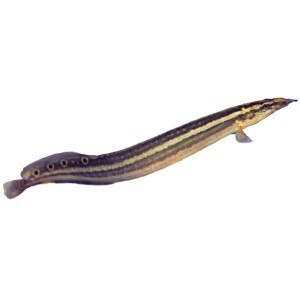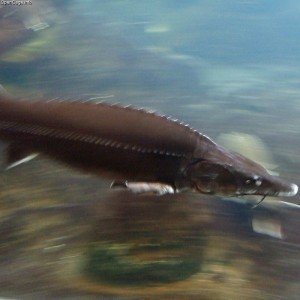What is the Size of an Eel?
Composed of 4 suborders, 19 families, 100 genera and roughly 800 species,  the Anguilliformes or Eels are one of the largest orders of fish in the world. In terms of what is the size of an eel, it depends on the species, but their length ranges from 5 centimeters (2.0 inches) to as large as 3.75 meters (12.3 feet).
the Anguilliformes or Eels are one of the largest orders of fish in the world. In terms of what is the size of an eel, it depends on the species, but their length ranges from 5 centimeters (2.0 inches) to as large as 3.75 meters (12.3 feet).
The Anguillidae family of freshwater eels belongs to the suborder Anguilloidei, and is made up of 19 species and subspecies. Among these is Anguilla anguilla, the European eel, which is typically 60 to 80 cm long, though it is known in rare occasions to reach 1 ½ meters in length. Anguilla bengalensis bengalensis, the Indian mottled eel, can grow as long as 1.2 m and weigh up to 6 kilograms. Anguilla bengalensis labiata, the African mottled eel, has an average length of 1.75 m and an average weight of 20 kg.
Still part of the Anguillidae family, the Indonesian shortfin eel (Anguilla bicolor bicolor) has an average lifespan of 20 years and grows up to a length of 1.2 m. The New Zealand longfin eel (Anguilla dieffenbachii) has a common length of 1.2 m and a common weight of 10 kg, but can, in certain cases, achieve a size of 2 m and weigh more than 50 kg (the female of the species is normally twice longer than the male). The American eel (Anguilla rostrata) holds the world weight record at 9.25 pounds.
Of the Moray eels of the Muraenidae family, the smallest would be the Snyder’s Moray (Anarchias leucurus) at 11.5 cm long (4.5 in), while the Slender giant moray (Strophidon sathete) is the longest at 4 m (13 ft). In terms of mass, the largest would be the Giant moray (Gymnothorax javanicus), which can grow up to nearly 3 m (9.8 ft) in length and above 36 kg (79 lbs) in weight. The False morays of the Chlopsidae family are so-named because of their resemblance to the morays, except that they are considerably smaller, ranging in size between 11 to 42 cm (4.3-17 in).
Also known as Worm eels, as well as Spaghetti eels, the Moringuidae family ranges in size from around 15 to 140 cm (5.9-55 in). The Mud eels of the Heterenchelyidae family vary in length from 32 to 149 cm (13-59 in). The largest member of the Congroidei suborder’s Congridae family, the European conger (Conger conger) is known to grow up to a length of 3 m (9.8 ft) and weigh 160 kg (350 lbs). The Pike conger of the Muraenesocidae family ranges in length from 60 to 250 cm (2.0-8.2 ft).
The Longneck eels of the Derichthyidae family can reach a size of around 60 cm (24 in). The interestingly-named Witch eels or Duckbill eels of the Nettastomatidae family have a maximum length of 125 cm (4.10 ft). The Snake eels of the family Ophichthidae (appropriately taken from the Greek words “ophis” meaning “snake” and “ichthys” meaning fish) average 10 cm (3.9 in) up to 3 m long (9.8 ft). And from the suborder Synaphobranchoidei, the Cutthroat eels of the Synaphobranchidae family range in length from 23 to 160 cm (9.1-63 in).
It should be noted that certain other marine creatures usually referred to as eels should not truly be classified as such. For instance, the Electric eel is actually a relative of the catfish, while the Lamprey eel is an aquatic parasite and not even really a fish. At any rate, the rest of the examples given are only a few of the staggering number of suborders, families and species of the Anguilliformes order.





